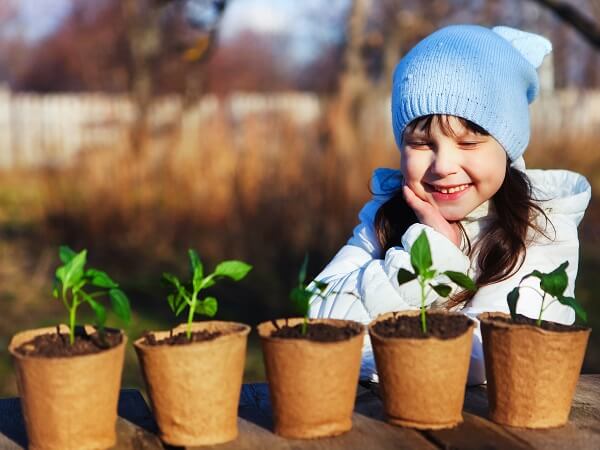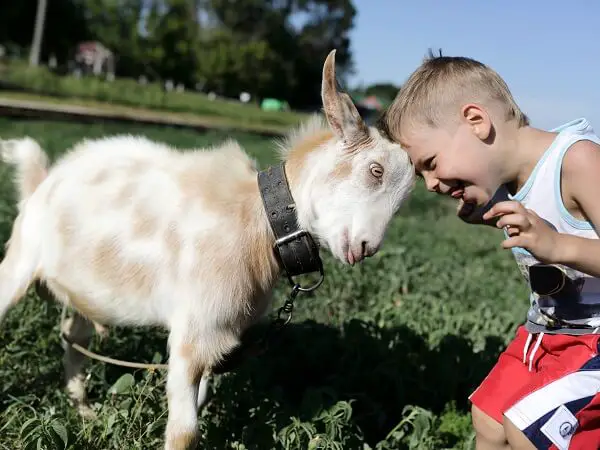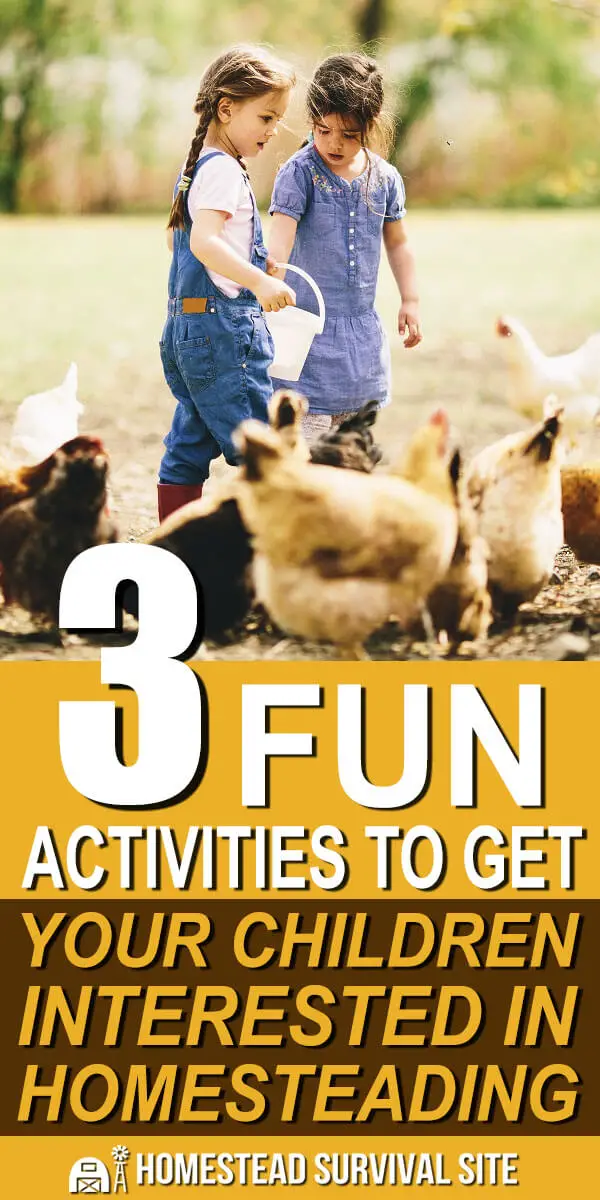Estimated reading time: 7 minutes
Having more hands on the homestead is a great way to not only get more projects done but also raise your level of sustainability. While some of us homesteaders may be living with multiple generations of grandparents and extended family, some only have their kiddos to help out on the farm.
While you and your spouse may be dedicated to creating a homestead that could survive a disaster, I would venture to bet that your kids may not be as enthusiastic as you are. (Or is that just my family?)
Want to save this post for later? Click Here to Pin It on Pinterest!
It is hard in today’s world to get our kids excited about anything, let alone the hard work that it takes to care for a proper homestead. However, there are ways that you can teach your child about their environment and how important it is to know how to homestead and survive in case of disaster.
Help your children understand the importance of being able to take care of your family and explain the reasons behind your choice to homestead in a kid-friendly way that they can understand.
There are plenty of ways to make homesteading fun for your children. Many times, our kids enjoy their work so much that they don’t realize that the task is even about survival. Choosing work for your kids that they enjoy and play to their strengths is an easy way to get them involved as well.
Check out these three fun activities to get your children interested in homesteading this year.
1. Sprout Some Seeds

Kids of all ages enjoy the excitement of sprouting seeds and being able to see daily plant growth. Little ones especially can get on board with sprouting seeds when allowed to get their hands dirty in the process. (Don’t worry, that’s why you have a washing machine!)
If you’re new to homesteading, consider looking at your fridge and pantry to see what type of plants your family would benefit from growing. Make a list of things that you usually eat, like lettuce and potatoes, and don’t forget to include any fruits or vegetables that may be hiding in the pantry like spaghetti sauce and canned fruit.
When looking through seed catalogs or displays at the store, stay away from things that you have never even heard of. A good way to get overwhelmed in gardening is to grow something that your family has never eaten before. Stick with the produce that you know and love rather than waste time growing something that you don’t know what to do with.
Introducing your children to plants and plant life is easy with just a few supplies. You’ll need the seeds themselves, of course, but also some dirt and small containers to start. In the interest of reusing everything on the homestead, we like to sprout seeds in recycled options like old yogurt cups, eggshell cartons, or pots from last year.
Making your own biodegradable pots is another way to make it easier to transplant the seedlings later on. Let your kids fill the containers with dirt and then plant a few seeds in each one. Older children can benefit from writing out the names of the plants and making sure that everything is labeled correctly. Preschoolers can draw the fruit or vegetable on a label to help them remember what the end result will be once harvest arrives.
We recommend starting seeds indoors to help them germinate and stay warm. Once the plants are big enough, transplant them out in the garden with your little one’s help.
2. Add A New Animal

Who doesn’t love a new baby on the homestead? Many homesteaders enjoy having livestock on the farm. Animals like chickens not only provide a constant source of eggs to eat but also can become dinner themselves if disaster strikes. Ducks are another good animal for homesteading and many breeds lay eggs and provide meat for the dinner table.
Rabbits are a great option for homesteading thanks to their high reproduction cycle and tasty meat. Adding a new animal to the farm is an excellent way to spark interest with your child and teach them a bit of responsibility along the way.
Allowing your child to pick out their own animal is a great way to get them involved in homesteading. They are much more likely to care for the animal and do the dirty work involved if they get to choose their animal.
We decided to let our older boys each get a breeding rabbit to start. The result was a lot of learning and time cuddling spunky little rabbits plus plenty of meat later on. Rabbits are also a good item to sell to local farm retailers and online to boost your homestead income as well.
Other great homestead animals include goats, sheep, pigs, and of course, cows. Each one is an adventure, no matter your age.
3. Build With Power Tools

For those of us with pre-teens and teenagers on the farm, it can be harder to get them as excited to help out with the daily chores. This age group comes with their own mood and attitude that can be difficult to overcome. However, we have found that asking them to build something has been a great way to include them on the homestead. Because who doesn’t like using power tools?
Ask your older kids to build a project on the homestead using leftover scrap wood and materials. Help them by planning out the structure as well as teaching them how to safely use the power tools involved. Give them the supplies needed as well as some steel-toed boots and a set (or two) of safety glasses.
Start small with projects like bat houses or building a small animal pen. Build up to larger structures that carry more importance on the farm like updating the pig pen and or making some floating row covers for the garden.
Older kids want the freedom and independence to do their own thing on the farm. Asking them to complete a project will help them learn valuable skills as well as interest them in homesteading.
There are plenty of ways to get your kids out on the land and working with their hands on the homestead. Younger ones can handle small, but very important projects, like sprouting seeds while older ones can spread their wings a bit by building something new. Involving your kids in the process of homesteading, and having the patience to teach them, is an essential part of survival.
Like this post? Don't forget to Pin It on Pinterest!
About The Author: Kristina Phelan is a freelance writer and newspaper columnist who lives on a farm in the Midwest. When she’s not writing you can find her outside along with her husband, three kids, and too many chickens. Find out more about Kristina at Mama Bear Moxie.












